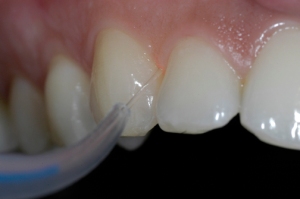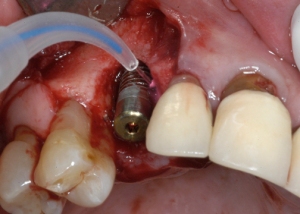Surgical lasers are currently undergoing a tremendous evolution in dentistry. Much of it has to do with the ability of manufacturers to scale their size down dramatically, and to make them more user friendly. Additionally, new wavelength are constantly being added to the repertoire, which in turn broadens the
application field. Dental or surgical lasers are defined by their lasing medium (the substance inside the laser, which creates the laser light), which in turn defines the wavelength of the emitted laser beam.
The following are the most common lasers used in dentistry:
- Nd:YAG laser
- Diode laser
- ER:YAG laser & Er,Cr:YSGG laser
- Carbon Dioxide laser
Each laser has its own unique application, based on the type of tissue interaction it offers. Some lasers have their greatest energy absorption in soft tissue, others in bone tissue and yet others in hemoglobin or melanin. the applications for lasers is basically chosen by their absorption spectrum in human tissue.
One of the main applications today in dentistry is soft tissue surgery. Lasers are often used in periodontal disease cases, to complement traditional scaling and rootplaning procedures. Lasers do not cause the kind of discomfort that traditional periodontal procedures cause. That being said, not all periodontal procedures can be replaced by lasers either.
Another application which is gaining ground is photosterilization of compromised teeth or dental implants.
Often times we try to save compromised teeth and dental implants with a grafting procedure, however, a pre-requisite is that the surface of such a tooth or implant is meticulously cleaned and sterilized, or new bone will not form against it.
Laser bone surgery is just in its infancy in dentistry, but new powerful lasers make this possible already. The advantage of laser bone surgery (in contrast to rotary instruments or piezo-electric instruments) is the cleaner and more sterile surgical field as well as the reduced post-operative inflammation and discomfort.
Lastly there is the new field of biostimualtion, which has actually nothing to do with surgery, but can help dramatically in the healing process. Biostimualtion was already discussed in a previous post underCold Lasers.
For more information on lasers in dentistry, please visit my website at: http://www.robertgougaloff.com.
Filed under: Laser Dentistry | Tagged: Laser Applications, Laser Dentistry, Laser Surgery, Lasers, Robert Gougaloff | Leave a comment »









